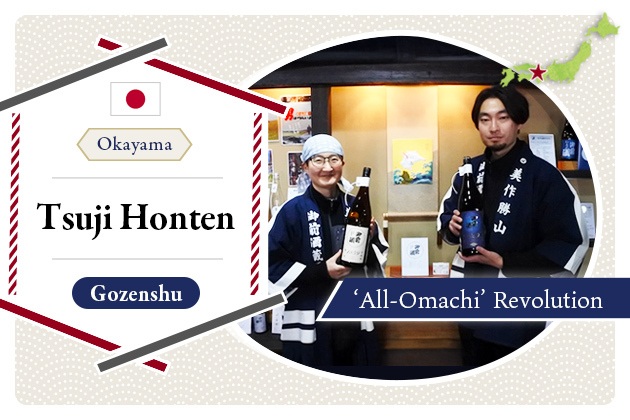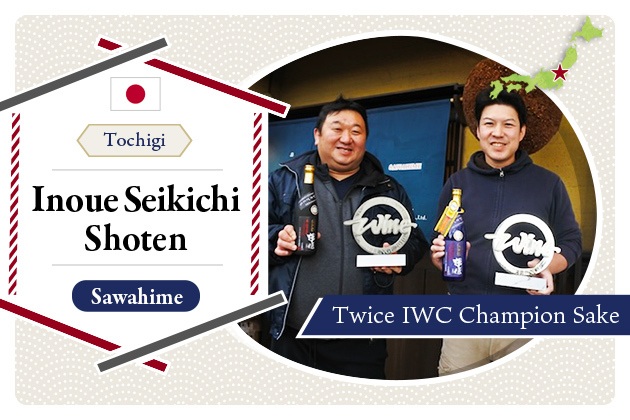
2023.10
11
Bodaimoto and Mizumoto: “new” production methods that are actually time-honored methods
Have you heard the terms “bodaimoto” or “mizumoto”? These refer to a production method for shubo (or moto, fermentation starter) developed in medieval Japan. Bodaimoto and/or mizumoto disappeared from sake brewing practice once, but recent studies have resurrected them, delighting sake afficionados with their unique flavors.
In this article, we will learn about the methodology, history, and the characteristics of bodaimoto and mizumoto.
What are bodaimoto and mizumoto?
Bodaimoto is a traditional production method of shubo (or moto, fermentation starter) considered to have been invented in Nara during the Muromachi Period (1338 –1573). This shubo is regarded as the origin of sokujo and kimoto-style shubo and is characteristic in making sake brewing possible in warmer climates. Put simply, bodaimoto is a method to produce sour water called “soyashi mizu (soyashi water)” for use in making shubo.
Soyashi water is acidic water produced by lactic acid fermentation and gives a sour aroma similar to yoghurt. Acidic soyashi water reduces undesirable bacteria and generates an environment favorable to yeast activity. Once yeast produces a certain amount of alcohol, it leads to elimination of lactic acid bacteria and survival only of superior yeast strains—a sound way to produce sake.
Flavors generated by bodaimoto can be diverse, but billed as the origin of kimoto style, they typically possess distinctive acidity derived from soyashi water with natural lactic acid bacteria, and lean towards the deep, umami-rich and savory end of the spectrum.
This method of producing shubo is sometimes called “mizumoto,” but in this article, we will use “bodaimoto” to represent all the other terminological variations.
History of bodaimoto
Bodaimoto was developed at Bodaisan Shoryakuji Temple in the outskirts of Nara City, in the mid-Muromachi period (1336-1573). Bodaisan Shoryakuji Temple was the third largest temple following Todaiji and Kofukuji Temples and is said to have housed at least several hundred, possibly thousands of ascetics. Sales of sake made with bodaimoto financed this large-scale operation.
Shoryakuji once prospered with their sake production. It is now a small temple after the restriction of economic activities of temples during the Edo period (1603-1868), and today it is known for its maple foliage.
Bodaimoto was valued for a while for its practicality but was not without its flaws. The method depends on microorganisms that naturally accumulate, hence lacking stability. Another challenge is its complicated production process.
In the Meiji period (1868-1912), the sokujo method was invented to solve these issues. This ground-breaking invention seemed to have wiped out the practice of bodaimoto in the Taisho period (1912-1926). Then in 2002, Okura Honke, located in Kashiba City, Nara Prefecture, discovered that the shubo used to make their nigori (cloudy sake) offered as sacred sake for the gods was bodaimoto.
Moreover, in the late Showa period (1926-1989), there were independent attempts in Nara and Okayama Prefectures to revive bodaimoto. In the Heisei period (1989-2019), a project to restore bodaimoto in a close-to-original form using microorganisms, rice and water from Shoryakuji was launched in Nara Prefecture. Through these endeavors, bodaimoto successfully made a comeback to the modern sake brewing practice.
How to make bodaimoto
We will delve into how bodaimoto is made in detail. As stated above, there were two separate attempts at restoring bodaimoto in Nara and Okayama in modern days. The two have distinct methods, as illustrated below.
(*1) Produced based on Table 1 in Kazunari Ito, Maiko Tsuji, Tsuyoshi Miyake (2015). The Novel Method of Traditional Soyashimizu Production Using Rice Koji. Journal of The Brewing Society of Japan 110 (10), 670-677.
Nara method
The boodaimoto that was restored in Nara in the Heisei period follows the technical text of “Goshu no Nikki” that records sake brewing in the Middle Ages.
First, part of the rice is steamed and then cooled before it is buried in the remaining raw rice. All the rice is submerged in water and left in a warm environment for about 3 days to produce soyashi water. Afterwards, rice is removed from the water and steamed, and put back into the soyashi water. Koji is added and 1-2 weeks later, bodaimoto is ready.
In this Nara method, lactic acid bacteria from Shoryuji is used. This lactic acid bacteria was discovered during the restoration project in the mountain spring water within the temple’s compound, and is identified as Lc. lactis subsp. lacti. According to Kazuyuki Matsuzawa, managing chief researcher of Nara Prefecture Institute of Industrial Development, this is “a type of lactic acid bacteria so powerful that it expels all other microbes overnight.” (*2) and plays an important role in producing soyashi water in warm environments.
Okayama method
In Okayama, an antique text called “Nihon Sankai Meisan Zue” kept at a brewery in Katsuyama, Maniwa City, was consulted to come up with a unique way to produce soyashi water.
Different from the Nara method where rice is used, in Okayama, soyashi water is made with a small amount of rice koji and water. Soyashi water that is produced after 10 to 20 days is pasteurized, and steamed rice and koji are added to it before shubo (moto) is complete in 1-2 weeks. Rice koji is home to more diverse microbes compared to raw rice. Soyashi water made with rice koji thus can propagate and activate various microbes other than the intended lactic acid bacteria. If this soyashi water is directly used in sake brewing, these microbes other than lactic acid bacteria may affect the quality of sake. Instead, soyashi water is pasteurized in the Okayama method. However, this process eliminates lactic acid bacteria as well, so it is required that soyashi water has higher acidity than that of the Nara method. High acidity in soyashi water is made possible by the appropriate amount of rice koji and the long period of soyashi process.
This method makes use of a wide variety of bacteria that is found in the local area. There is some expectation that this will drive the more widespread use of soyashi water production technology.
Summary
Bodaimoto is a traditional shubo-making method using soyashi water. The practice was once discontinued, then revived by research in recent years to provide unique and savory sake. Not only the method employing bacteria from the original site of Bodaisan Shoryakuji, but another that takes advantage of local lactic acid bacteria have been invented, making a way for bodaimoto brewing to be widely adopted. Continued attention will certainly be paid to this old and new method that offers original sake flavors.
*Translation support: Sake Brewers Association of North America
Pickup Articles
2019.01.18
2019.01.25
Trending Articles
Popular Articles
Recent Articles













